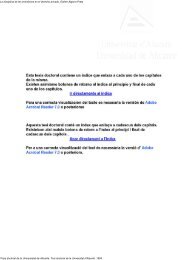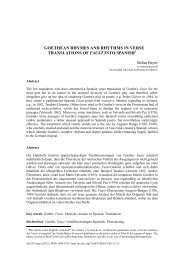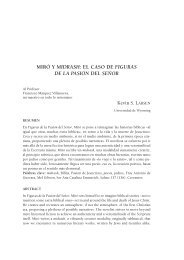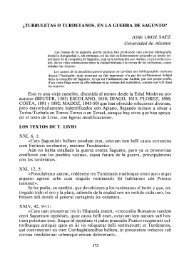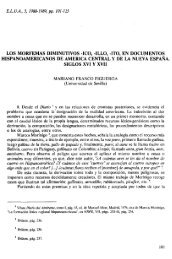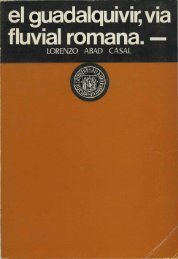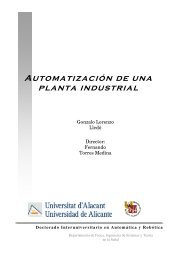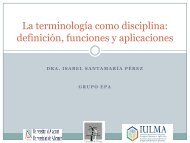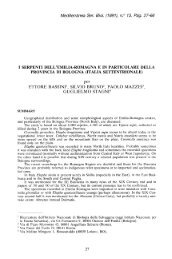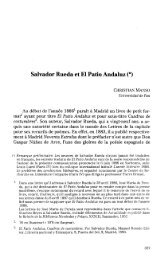Tema 2: Características de la programación funcional
Tema 2: Características de la programación funcional
Tema 2: Características de la programación funcional
You also want an ePaper? Increase the reach of your titles
YUMPU automatically turns print PDFs into web optimized ePapers that Google loves.
<strong>Tema</strong> 2: <strong>Características</strong> <strong>de</strong> <strong>la</strong> <strong>programación</strong> <strong>funcional</strong><br />
el i<strong>de</strong>ntificador que está ligado al procedimiento.<br />
Una función pue<strong>de</strong> ser el argumento <strong>de</strong> otra función.<br />
Por ejemplo, po<strong>de</strong>mos <strong>de</strong>fnir <strong>la</strong> siguiente función aplicar que toma como argumento una<br />
función f 2 argumentos y realiza <strong>la</strong> l<strong>la</strong>mada a f con los 2 argumentos:<br />
(<strong>de</strong>fine (aplicar f x y)<br />
(f x y))<br />
> (aplicar + 2 3)<br />
5<br />
> (aplicar * 2 3)<br />
6<br />
(aplicar word 'ho<strong>la</strong> 'adios)<br />
ho<strong>la</strong>adios<br />
En el siguiente ejemplo <strong>de</strong>finimos una función que toma dos procedimientos unarios (<strong>de</strong> un<br />
argumento) f y g y los aplica a un número:<br />
(<strong>de</strong>fine (aplicar-2 f g x)<br />
(f (g x)))<br />
(<strong>de</strong>fine (5+ x)<br />
(+ 5 x))<br />
(<strong>de</strong>fine (doble x)<br />
(* 2 x))<br />
> (aplicar-2 5+ doble 8)<br />
21<br />
Una función pue<strong>de</strong> ser el valor <strong>de</strong>vuelto por otra función.<br />
Vamos a <strong>de</strong>finir una función que <strong>de</strong>vuelve otra función. La siguiente función<br />
hacer-suma1 <strong>de</strong>fine en su interior <strong>la</strong> función suma1 y <strong>la</strong> <strong>de</strong>vuelve.<br />
(<strong>de</strong>fine (hacer-suma1)<br />
(<strong>de</strong>fine (suma1 x)<br />
(+ x 1))<br />
suma1)<br />
(<strong>de</strong>fine f (hacer-suma1))<br />
> (f 3)<br />
4<br />
Vemos que el resultado <strong>de</strong> <strong>la</strong> l<strong>la</strong>mada a hacer-suma1 se guarda en <strong>la</strong> variable f y <strong>de</strong>spués<br />
comprobamos que realmente es una función que suma 1.<br />
Po<strong>de</strong>mos complicar un poco más el ejemplo <strong>de</strong>finiendo un parámetro con el número que<br />
queremos sumar en <strong>la</strong> función que <strong>de</strong>volvemos. Así, <strong>la</strong> función hacer-sumak construye<br />
otra función que suma el parámetro k al argumento x que se le pasa:<br />
(<strong>de</strong>fine (hacer-sumak k)<br />
(<strong>de</strong>fine (sumak x)<br />
Page 13<br />
Copyright © 2006 Depto. CCIA, Universidad <strong>de</strong> Alicante All rights reserved.



